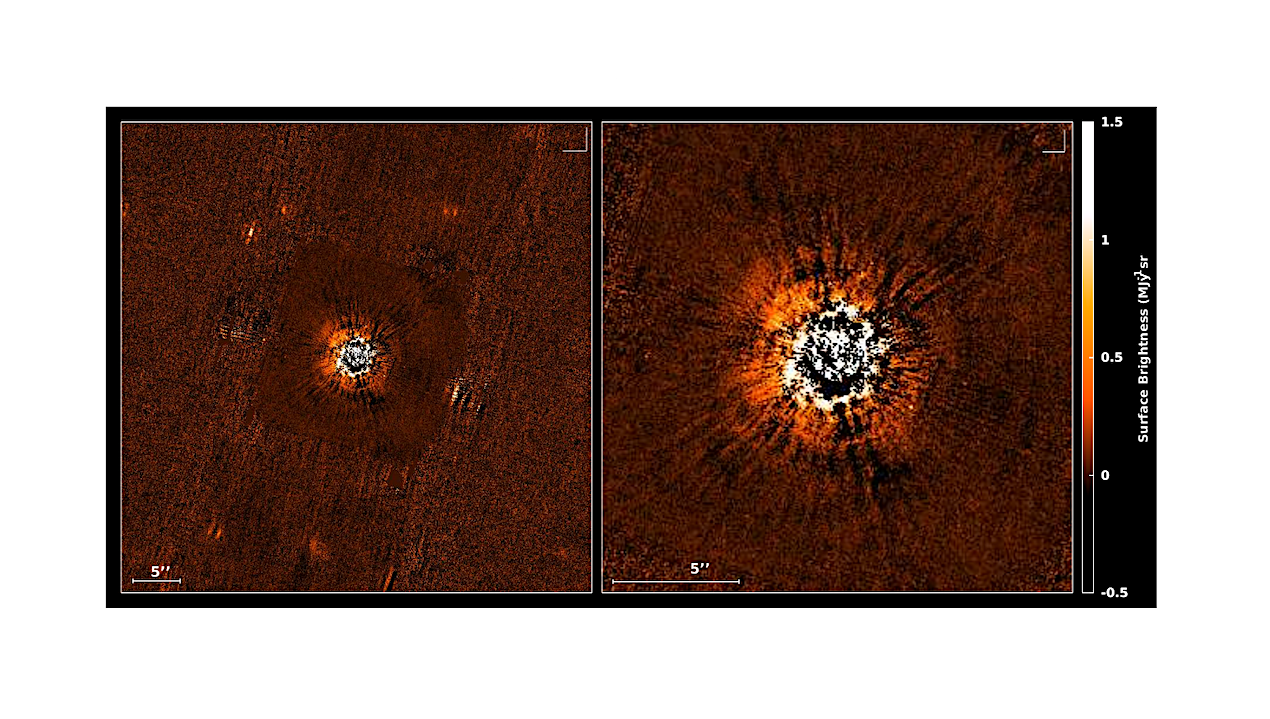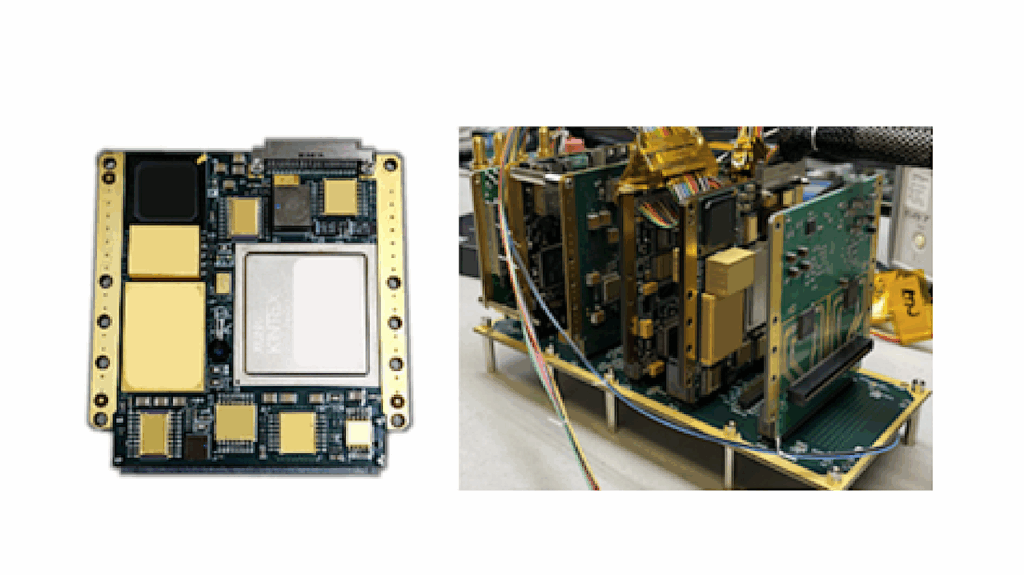Searching For Planets Orbiting Epsilon Eridani With JWST/NIRCam

We present observations of ϵ Eridani with the JWST/NIRCam coronagraph aimed at imaging planets orbiting within this system.
In particular, these observations targeted (1) the Jupiter-like planet, first detected orbiting at 3.5 AU with radial velocity observations, and (2) the planet postulated to be responsible for carving the edges of ϵ Eridani’s outer ring, expected to orbit at 40-50 AU. However, no point sources were detected at a statistically significant level.
We report new, improved upper limits at 4 µm: ∼1×10−6 contrast at 1″, and ∼2×10−8 beyond 5″. The latter contrast limit precludes Saturnmass planets at separations >16 AU given current models. We also report upper limits for ϵ Eridani’s disk emission at 4 µm.
While the radial surface brightness profile shows no evidence of emission, we detect a 1-σ surface brightness signal on the east side of the system, consistent with forward scattering emission expected for ϵ Eridani’s disk inclination.
Finally, we evaluate the performance of the 3-roll observation strategy, which was first employed in these observations: the gains in contrast are modest, with 20-30% improvements with respect to the conventional 2-roll strategy.
Jorge Llop-Sayson, Charles Beichman, Geoffrey Bryden, Marie Ygouf, Andras Gaspar, William Thompson, Aniket Sanghi, Dimitri Mawet, Alexandra Z. Greenbaum, Jarron Leisenring, Schuyler Wolff, Marcia Rieke, George Rieke
Comments: Accepted for publication in AJ
Subjects: Earth and Planetary Astrophysics (astro-ph.EP)
Cite as: arXiv:2508.08463 [astro-ph.EP] (or arXiv:2508.08463v1 [astro-ph.EP] for this version)
https://doi.org/10.48550/arXiv.2508.08463
Focus to learn more
Submission history
From: Jorge Llop-Sayson
[v1] Mon, 11 Aug 2025 20:43:51 UTC (3,589 KB)
https://arxiv.org/abs/2508.08463
Astrobiology,








